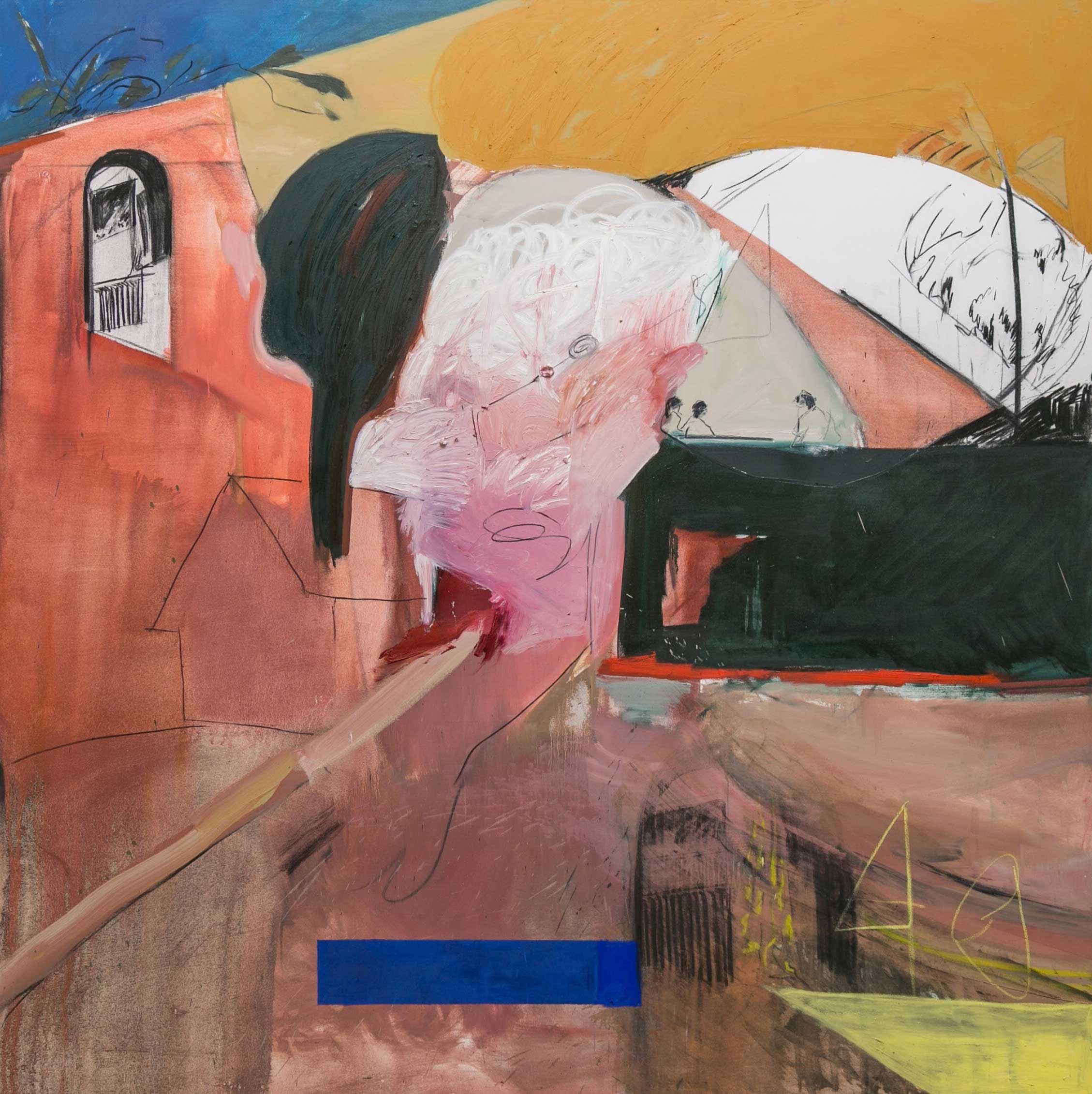Emma Fineman’s 2017 work My Hometown was Burning and All I Could Think of Was That Sun Bleached Wall I Pictured in A Dream About The Dominican Republic invites the viewer into an ambiguous landscape. Outlines of houses can be discerned atop broad, gestural brushstrokes, whilst a set of figures converge between abstracted planes. The work appears to reject narrative, instead apprehending the viewer through an uncanny, dreamlike sense of time and place.
In Susan Sontag’s 1964 essay, Against Interpretation, the American writer, filmmaker and activist calls for a renewed focus on perceiving art rather than interpreting it. Where a viewer’s interpretation of art can only ever be a translation, Sontag argues that what is most important in contemporary art is ‘to recover our sense. We must learn to see more, to hear more, to feel more.’ Citing Sontag’s essay as a seminal text which has informed her practice, Fineman outlines the critical framework which should structure our reading of her painting: one in which experience presides over interpretation.
Such an approach is easy given Fineman’s painting’s visceral appeal to the senses – her work uses vast swathes of muted colour, thin applications of paint marked by their attrition, expressive lines of charcoal, and thick, laboured, impasto. These textured gestures inevitably appeal to our sense of touch through their contrast and sheer variety. The artist’s construction of an ambiguous landscape similarly addresses the viewer phenomenologically, as if one could step in amongst the formless planes. Their quality of obliqueness, obfuscation, and use of juxtaposing colours are all qualities which engage with ideas surrounding the sublime – that transcendent, bodily feeling which escapes expression through language.
Nonetheless, Fineman’s abstraction is deeply personal, and remains underwritten by the reconstruction of memory. My Hometown was Burning and All I Could Think of Was That Sun Bleached Wall I Pictured in A Dream About The Dominican Republic was made following the period of Californian wildfires in 2017. The image does not offer a narrative of the destruction, but instead represents a subjective account of the experience of the event. Consequently, Fineman describes her aesthetic process as tailored to her own experience of life: the mixture of ‘viridian green and venetian red suddenly become my grandmother’s curtains’, and chooses to work on a one-to-one scale, ‘so that the images I am depicting in my work are at a relational scale to how I would experience them in daily life’.
Bypassing conventional figuration, Fineman’s paintings are grounded in the liminal space between experience and thought. Time is drawn out and reconstituted, allowing multiple narratives to co-exist within each work. As such, Fineman’s work can be understood to realign our interpretive processes with those of the sensory, favouring an abstraction which endorses experience and draws on fragments of memory
(By Lydia Earthy)
